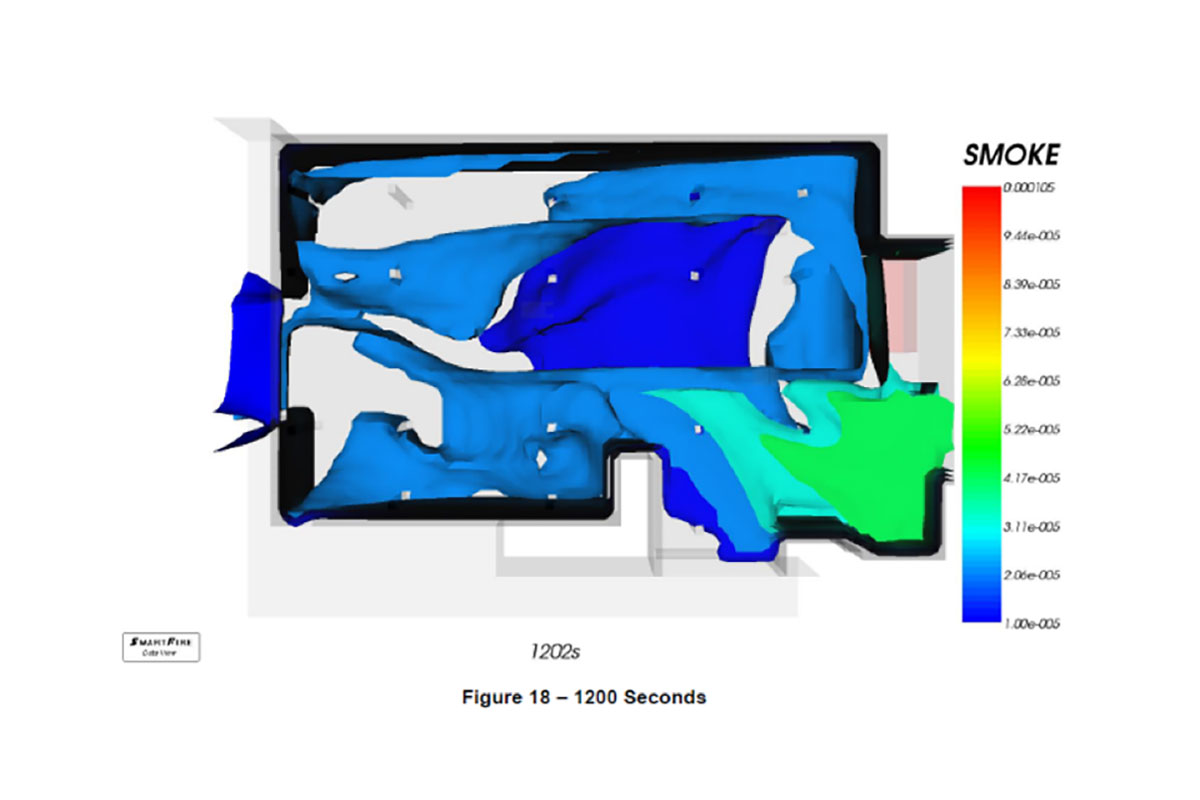Having played a leading role in the development of CFD modelling for use in the engineering sector. We are the go-to experts in the CFD arena.
We have been at the forefront of the technology’s development, deploying it on projects of every size across the UK.
Computational Fluid Dynamics (CFD), also known as fire modelling, is a key tool for predicting the spread of smoke and heat from fires in built environments and is a powerful design and safety tool. It is important to assess and understand how heat and smoke move around a building in the event of a fire. This will influence means of escape and the design of active and passive fire safety systems.

CFD modelling uses a detailed virtual representation of the building created from plans to simulate and map the spread of fire and smoke movement. Showing how the proposed layout and features of the building affect the spread of the smoke and heat, whilst highlights areas of concern, such as where fire may spread more quickly or areas where smoke is hotter or denser.
Our fire engineering experts design the fire strategy and input all the details of the building’s physical environment, providing the software with the information it needs to carry out the complex equations. The results can then be assessed to establish the effectiveness of the fire strategy in the event of a fire.
CFD Modelling also aids with the detailed design of mechanical smoke ventilation systems. The software allows the designer to model complex airflows, fire patterns and smoke behaviour within the building, and to visually inspect and analyse the results. This allows any areas of development or improvement to be identified and implemented.
CFD analysis is required when applying a fire engineered solution that is not code compliant or an ADB prescribed solution.
The analysis provided by our CFD Team is suitable for submission to the approving authority. Our team will provide support and guidance through the approvals process. Following installation, the results of the CFD modelling can be authenticated to demonstrate to all approving authorities that each component has been installed correctly and is operating as intended.
We use CFD modelling alongside a wide range of advanced technologies such as Evacuation Modelling, Time Equivalence Modelling and Finite-Time Analysis to present a clear and substantiated case for a more creative approach to fire design.
Services
Policies

FDS Consult UK Limited,152 – 154 London Road,
Greenhithe, Dartford,
Kent, DA9 9JW.
Copyright © 2009 – 2023 FDS Consult UK Limited
Registered Office: 152-154 London Road, Greenhithe, Dartford, Kent, DA9 9JW.
Registered in England: 12601647